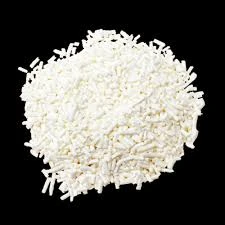
soy emulsifier
The Role of Soy Emulsifiers in Food Production
Emulsifiers play a pivotal role in food science, enhancing texture, stability, and shelf life in various products. Among them, soy emulsifiers, derived from soybeans, are particularly noteworthy for their versatility and efficacy. This article will delve into the significance of soy emulsifiers, their mechanisms, applications, and the advantages they offer in food production.
Understanding Emulsifiers
At its core, an emulsifier is a substance that helps mix two or more immiscible liquids, such as oil and water. Emulsifiers contain both hydrophilic (water-attracting) and hydrophobic (oil-attracting) properties, allowing them to bridge the gap between the two phases. When incorporated into a mixture, emulsifiers reduce the surface tension at the interface, enabling a stable emulsion. This property is vital in food products where the combination of oil and water is necessary but challenging to achieve.
Soy Emulsifiers Composition and Mechanism
Soy emulsifiers are typically derived from soy lecithin, a natural phospholipid obtained during the processing of soybean oil. Lecithin is composed of phosphatidylcholine, phosphatidylethanolamine, and other lipids, which contribute to its emulsifying properties. The amphiphilic nature of these molecules makes them effective at stabilizing emulsions. When soy lecithin is added to food formulations, it forms a protective film around oil droplets, preventing them from coalescing and separating from the aqueous phase.
Applications in Food Production
soy emulsifier

Soy emulsifiers have a wide range of applications in the food industry. They are commonly used in products such as dressings, mayonnaise, margarine, and baked goods. In sauces and dressings, soy emulsifiers help achieve a smooth and creamy texture, while ensuring that oil and water remain well dispersed. In baked goods, they enhance dough stability, improve crumb structure, and extend the shelf life of products. Additionally, soy emulsifiers are utilized in ice creams and whipped toppings to create a light and airy mouthfeel.
Advantages of Soy Emulsifiers
There are several advantages to using soy emulsifiers in food production. Firstly, being plant-based, soy emulsifiers cater to the growing demand for vegetarian and vegan products. They are a sustainable alternative to animal-derived emulsifiers, making them more appealing to environmentally conscious consumers.
Furthermore, soy emulsifiers possess excellent functionality. They can effectively stabilize emulsions over a wide range of temperatures and pH levels, making them suitable for various food applications. Their ability to improve texture and mouthfeel enhances the overall sensory experience for consumers, contributing to increased product satisfaction.
Moreover, soy emulsifiers can contribute to the nutritional profile of food products. Lecithin, for example, is a source of choline, an essential nutrient that plays a crucial role in brain health and metabolism. Incorporating soy emulsifiers into functional foods can add nutritional value, appealing to health-conscious consumers.
Conclusion
In conclusion, soy emulsifiers are indispensable ingredients in modern food production. Their ability to stabilize emulsions, improve texture, and enhance shelf life makes them a preferred choice among food manufacturers. With the ongoing growth in plant-based diets and the demand for sustainable food options, the use of soy emulsifiers is likely to increase. As more consumers seek products that align with their dietary choices and values, the role of soy emulsifiers will remain significant in crafting high-quality, appealing, and nutritious food products.
-
Understanding Synthetic Rubber OptionsNewsApr.27,2025
-
Trichloroisocyanuric Acid: Essential for Clean and Safe WaterNewsApr.27,2025
-
Sodium Dichloroisocyanurate: Key to Safe Water TreatmentNewsApr.27,2025
-
Sodium Acid Pyrophosphate: Essential in Modern Food ProcessingNewsApr.27,2025
-
Essential Water Treatment ChemicalsNewsApr.27,2025
-
Denatured Alcohol and Its Industrial UsesNewsApr.27,2025
-
The Versatile Uses of Sodium BicarbonateNewsApr.24,2025
Hebei Tenger Chemical Technology Co., Ltd. focuses on the chemical industry and is committed to the export service of chemical raw materials.
-

view more DiethanolisopropanolamineIn the ever-growing field of chemical solutions, diethanolisopropanolamine (DEIPA) stands out as a versatile and important compound. Due to its unique chemical structure and properties, DEIPA is of interest to various industries including construction, personal care, and agriculture. -

view more TriisopropanolamineTriisopropanolamine (TIPA) alkanol amine substance, is a kind of alcohol amine compound with amino and alcohol hydroxyl, and because of its molecules contains both amino and hydroxyl. -

view more Tetramethyl Thiuram DisulfideTetramethyl thiuram disulfide, also known as TMTD, is a white to light-yellow powder with a distinct sulfur-like odor. It is soluble in organic solvents such as benzene, acetone, and ethyl acetate, making it highly versatile for use in different formulations. TMTD is known for its excellent vulcanization acceleration properties, which makes it a key ingredient in the production of rubber products. Additionally, it acts as an effective fungicide and bactericide, making it valuable in agricultural applications. Its high purity and stability ensure consistent performance, making it a preferred choice for manufacturers across various industries.











